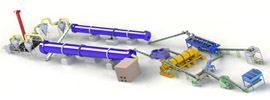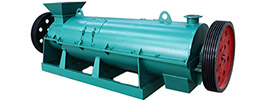Seedling substrate formulations vary significantly based on plants' water, nutrient, aeration, and pH requirements. Below are specialized ratios and principles for major plant categories:
I. Succulents
1. Terrestrial Types (e.g., Cacti, Stem Succulents)
- Formula: Peat soil∶Humus soil∶Coarse sand∶Calcareous material = 2∶2∶2∶1
- Rationale: Coarse sand and calcareous components enhance aeration. Peat and humus provide foundational nutrients. Calcareous materials adjust pH to slightly alkaline.
2. Epiphytic Types (e.g., Haworthia, Leaf Succulents)
- Formula: Peat soil∶Humus soil∶Coarse sand∶Wood ash∶Bone meal = 3∶3∶2∶1∶1
- Rationale: Wood ash and bone meal supplement potassium/calcium. Peat/humus retain moisture. Coarse sand ensures aeration for epiphytic growth.
3. Miniature Succulents (e.g., Lithops, Mesembryanthemum)
- Formula: Garden soil∶Peat soil∶Perlite∶River sand∶Coal cinder = 60%∶30%∶10%
- Rationale: Coal cinder and river sand improve drainage. Peat retains moisture. Garden soil provides structural support to prevent root rot.
4. Universal Formula
- Formula: Peat soil∶Perlite∶Vermiculite = 1∶1∶1
- Rationale: Perlite enhances aeration, vermiculite improves water retention, and peat provides nutrients. Suitable for most succulents, with particle size adjusted per species (e.g., finer for Lithops).
II. Vegetables
1. Solanaceous (e.g., Tomato, Eggplant)
- Formula: Peat soil∶Vermiculite = 70%∶30%
- Rationale: Peat retains water/nutrients, vermiculite boosts aeration. pH 6.0–6.8 supports solanaceous growth.
2. Cruciferous (e.g., Cabbage, Kale)
- Formula: Peat∶Perlite∶Sand = 1∶1∶1
- Rationale: Sand enhances drainage to prevent clubroot. Peat retains moisture, perlite improves aeration.
3. Industrial-Scale Seedling Production
- Formula: Corn stalk∶Composted cow manure∶Rice husk compost = 40%∶35%∶25%
- Rationale: Organic materials reduce costs. Porosity 40%–50%. Added brown sugar solution in spring aids fermentation warming.
4. Winter Greenhouse Formula
- Formula: Peat-based composite substrate (e.g., Shuangyuan blend)
- Rationale: Enhances seedling fresh weight and shortens lateral shoot differentiation time in low-temperature environments.
III. Ornamental Plants
1. Plug Tray Seedlings (e.g., Anthurium, Foliage Plants)
- Formula: Peat∶Vermiculite∶Perlite = 3∶1∶1
- Rationale: Increased perlite (2:1:1) in high-humidity southern regions enhances drainage. Increased vermiculite in dry northern regions improves water retention.
2. Camellia
- Formula: Perlite∶Peat soil = 2∶1
- Rationale: Peat retains moisture, perlite improves aeration. Ferrous sulfate added to adjust pH to acidic (4.5–5.5).
3. Begonia × tuberhybrida
- Formula: Peat∶Vermiculite∶Coal cinder∶Perlite = 1∶3∶2∶4
- Rationale: Coal cinder and perlite enhance aeration. Vermiculite retains moisture. Suitable for tuberous plants' dry environment adaptation.
IV. Trees/Forest Seedlings
1. Pinus tabuliformis Container Seedlings
- Formula: Peat soil∶Perlite∶Mushroom residue compost = 50%∶20%∶30%
- Rationale: Mushroom residue improves structure. Peat retains moisture, perlite enhances aeration.
2. Southern红豆杉 Cuttings
- Formula: Yellow heart soil∶Perlite = 54%∶46%
- Rationale: Yellow heart soil provides structure, perlite improves drainage to prevent cutting rot.
3. Liquidambar formosana Container Seedlings
- Formula: Peat∶Perlite = 60%∶40% or Peat∶Perlite∶Rice husk = 46%∶27%∶27%
- Rationale: Rice husk improves porosity. Peat retains moisture. Suitable for loose substrate requirements.
V. Special Adjustments & Principles
- pH Regulation:
- Acid-loving plants (e.g., blueberry, rhododendron) require ferrous sulfate or leaf mold.
- Increase vermiculite in dry northern regions for water retention; increase perlite in rainy southern regions for drainage.
- Nutrient Supplementation:
- Vegetable substrates add chicken manure or diammonium phosphate.
- Avoid excess organic fertilizer in succulent substrates to prevent root burn.
- Disinfection:
- Succulent substrates use carbendazim/thiram for sterilization.
- Forest substrates use trichloronitromethane/formaldehyde fumigation.
- Particle Size:
- Fine particles (1–3mm) for succulents.
- Coarser particles (3–6mm) for trees.
This structured approach balances water retention, aeration, nutrients, and pH to optimize seedling health across plant categories.
 Send us a Email
Send us a Email Wulong Industrial Cluster
Wulong Industrial Cluster Have any question?
Have any question?


















